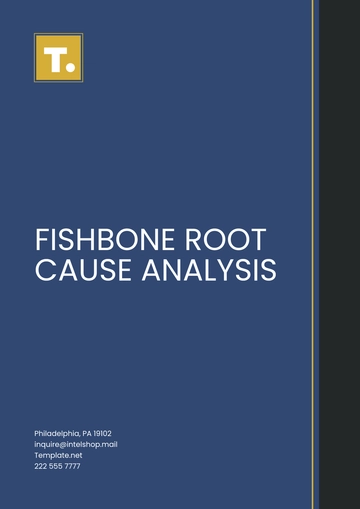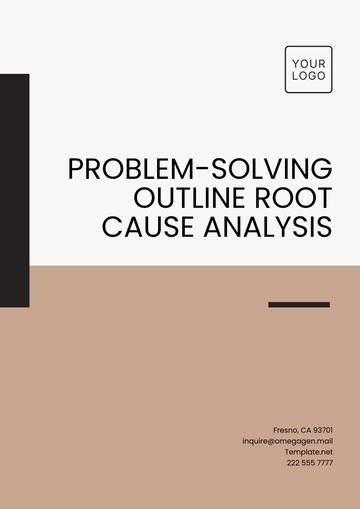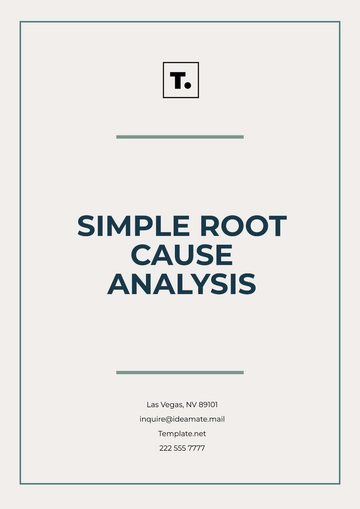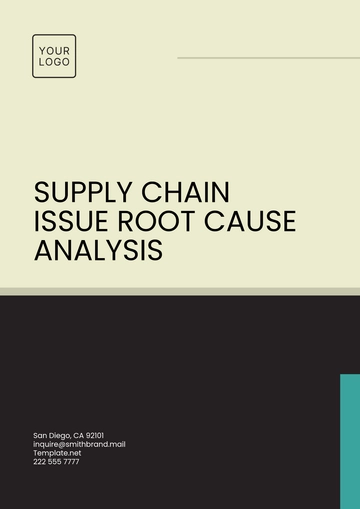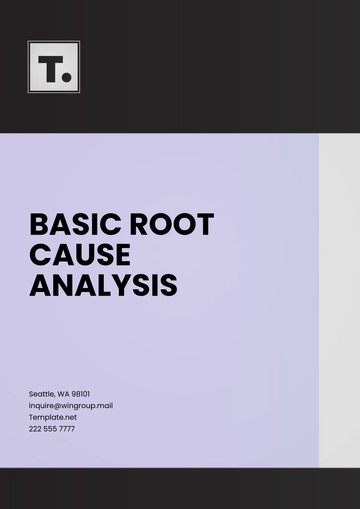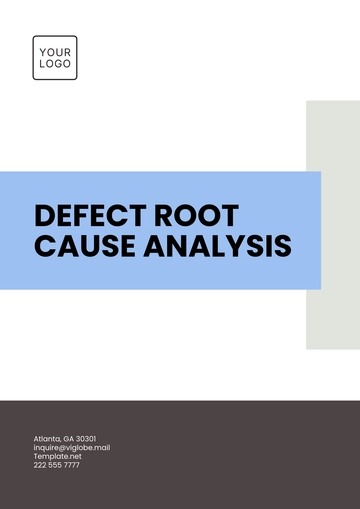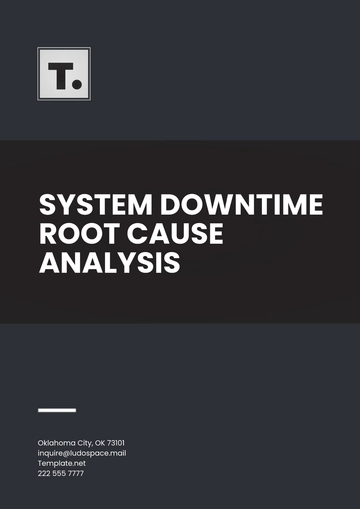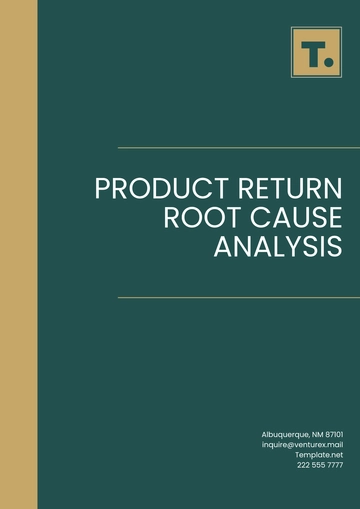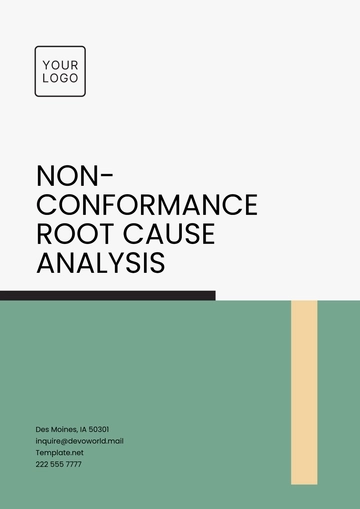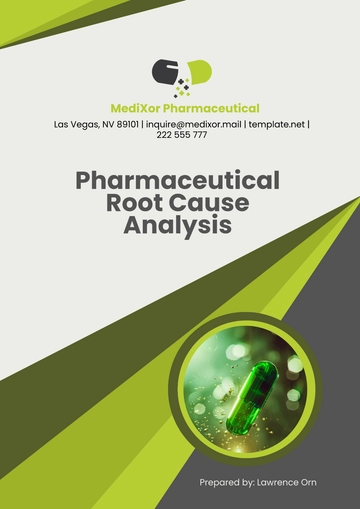Free Sales Financial Analysis of Profitable Closed Deals

Closed Deals
I. Executive Summary
In this comprehensive Sales Financial Analysis report, we offer an in-depth exploration of the lucrative closed deals throughout the fiscal year 2053. It delves into an array of vital components that fueled the remarkable success of our sales team, including the key financial metrics, client profiles, and sales strategies employed. This document serves as a valuable resource for stakeholders, shedding light on the pivotal factors that underpin our achievements and set the stage for future growth.
This document analyzes the company’s performance on profitable closed deals in the fiscal year 2053, which was marked by remarkable sales performance. The report will guide you through the intricate web of strategies, customer profiles, and financial milestones that came together to define our success in the year 2053. As we embark on the journey of analysis and evaluation, we hope to gain a profound understanding of the forces driving our profitability and the paths we must tread in the future to maintain our position at the forefront of this competitive marketplace.
II. Introduction
The business competition is increasingly tense, and a nuanced comprehension of the financial intricacies surrounding successful closed deals provides valuable insights into enduring growth and prosperity. This comprehensive report highlights the pivotal facets that defined our sales performance throughout the fiscal year 2053. By delving into the details of lucrative transactions, we aim to unveil the strategic maneuvers and financial metrics that underpin our success, providing valuable insights for future endeavors in the fiercely competitive market landscape.
III. Closed Deals Overview
In the fiscal year 2053, our sales team demonstrated remarkable performance by successfully closing 100 deals, resulting in a total revenue of $10 million. These deals were evenly distributed across a diverse range of product lines, showcasing the versatility of our sales team's capabilities. The average deal size stood at a substantial $100,000, and the average sales cycle was efficiently completed in just 60 days.
Distribution of Deals Across Product Lines
The distribution of closed deals across product lines is visually represented in the pie chart above. This chart illustrates the proportion of deals attributed to each product category. Notably, Product Line A accounted for 40% of the deals, while Product Line B and Product Line C each contributed 30% and 20% respectively. The remaining 10% of deals were distributed across various other product lines.
This balanced distribution of closed deals underscores our sales team's ability to effectively cater to a wide array of client needs and product offerings.
IV. Client Profiles
Our client base was diversified, consisting of a wide range of small and large enterprises spanning various industries. Notable clients included:
CLIENT | INDUSTRY | DEAL SIZE | PROFIT MARGIN | NOTABLE CHARACTERISTIC |
Client 1 | Technology | $2 million | 60% | Significant revenue contribution; Partnership in implementing cutting-edge software solutions |
Client 2 | Healthcare | $1.5 million | 55% | Commitment to quality patient care; Investment in our healthcare software suite |
Client 3 | Manufacturing | $1.2 million | 50% | Dedication to process optimization; Our products greatly facilitated operations |
Client 4 | Finance | $900,000 | 48% | Innovative investment strategies empowered by our financial software |
Client 5 | Consulting | $800,000 | 47% | Exceptional consulting services amplified by our project management tools |
Client 6 | R&D | $1.8 million | 52% | Pioneering work in R&D; Partnership in the development of bespoke research tools |
Client 7 | Transpo and Logistics | $1.1 million | 49% | Efficient supply chain management streamlined by our logistics solutions |
These clients contributed significantly to our revenue and played a crucial role in our profitability.
V. Sales Strategies
Our sales success can be attributed to the following key strategies:
Market Segmentation: We targeted specific industry segments, tailoring our products to meet their unique needs.
Relationship Building: We invested in building strong, long-lasting relationships with clients, leading to repeat business and referrals.
Product Diversification: We expanded our product portfolio to cater to a wider range of client requirements.
Sales Training: Regular training and skill development programs were conducted to enhance our sales team's performance.
VI. Financial Metrics
The financial data for the year 2053 reveals an encouraging and steadily improving trend in key metrics. Total revenue shows consistent growth throughout the year, starting at $800,000 in January and reaching $1,350,000 by December. This substantial increase is a testament to the company's strong sales performance and market demand for its products. Gross profit margins also show a positive trend, increasing from 45% to 56% over the year, reflecting the company's ability to manage costs effectively and optimize its pricing strategy.
Furthermore, the net profit margin demonstrates a strong financial foundation, starting at 20% in January and progressively climbing to 31% in December. This upward trajectory signifies efficient cost management and increased profitability. Additionally, customer acquisition costs (CAC) decreased steadily from $6,000 in January to $3,800 in December, indicating a reduction in the costs associated with acquiring new customers. Conversely, customer lifetime value (CLV) rises from $30,000 in January to $41,000 in December, showcasing the value and loyalty of the company's customer base.
The return on investment (ROI) is consistently impressive, starting at 5x in January and reaching 7.2x in December. This illustrates the company's effectiveness in generating a high return relative to its marketing and acquisition expenses. In summary, the data from 2053 demonstrates a healthy financial picture with robust revenue growth, improved profit margins, and a notable increase in customer lifetime value, all contributing to a strong return on investment. These results indicate effective sales and financial strategies, positioning the company for continued success in the future.
VII. Deal Performance
In this section, we analyze the financial landscapes of five companies, examining the performance of significant deals. From multi-million-dollar transactions to profit margins, we will discuss the metrics that shape each company's success in the competitive business arena.
The provided information outlines the financial details of five different companies, each involved in deals of varying amounts with associated profit margins. Let's break down the key details for each company:
Company 1:
Deal Amount: $2 million | Profit Margin: 60% |
This company secured a substantial deal worth $2 million with an impressive profit margin of 60%. A higher profit margin generally indicates efficient cost management or premium pricing.
Company 2:
Deal Amount: $1.5 million | Profit Margin: 55% |
Company 2 closed a deal worth $1.5 million with a profit margin of 55%. While the deal amount is slightly less than Company 1, the profit margin is still relatively high.
Company 3:
Deal Amount: $1.2 million | Profit Margin: 50% |
Company 3's deal is valued at $1.2 million with a profit margin of 50%. This suggests a moderate level of profitability, and the company is likely managing its costs effectively.
Company 4:
Deal Amount: $900,000 | Profit Margin: 48% |
Company 4 secured a deal of $900,000 with a profit margin of 48%. While the deal amount is lower compared to the previous companies, the profit margin remains reasonable.
Company 5:
Deal Amount: $800,000 | Profit Margin: 47% |
Company 5's deal is the smallest among the listed companies at $800,000, and it comes with a profit margin of 47%. Despite the lower deal amount, the company is still maintaining a relatively healthy profit margin.
Implications
Deal Size: Companies 1 and 2 have the largest deal sizes, indicating a potentially larger scale of operations or higher-value offerings.
Profit Margins: All companies have profit margins above 45%, suggesting that they are generally operating with a good level of profitability.
Competitive Landscape: The information provided does not offer insights into the industries or specific markets these companies operate in. Understanding the competition and market conditions would provide a more comprehensive analysis.
VIII. Conclusion and Recommendations
This analysis of profitable closed deals throughout the fiscal year 2053 underscores the robust and sustained performance of our company. This performance was made possible by several key factors that warrant closer examination and strategic attention. As we move forward, we recommend a multifaceted approach to ensure our continued success and growth in the ever-evolving business landscape.
Diversification of the Product Portfolio: The data reveals a consistent upward trajectory in total revenue, suggesting a healthy market demand for our offerings. To capitalize on this momentum, we propose an even more comprehensive diversification of our product portfolio. By introducing new and innovative solutions, tailored to the diverse needs of a broader client base, we can secure a more extensive market share and cultivate resilience in the face of market fluctuations. This diversification should be guided by extensive market research and customer feedback to ensure that our product lineup aligns with emerging trends and customer preferences.
Strengthening Client Relationships: The outstanding performance of our company in 2053 is, in part, attributable to the nurturing of strong, long-lasting relationships with our clients. These relationships have resulted in repeat business and referrals, creating a solid foundation for sustainable growth. We recommend dedicating further resources to client relationship management. Engaging clients proactively, understanding their evolving needs, and providing exceptional service will not only secure repeat business but also enhance our reputation as a trusted partner in their success.
Investment in Sales Team Training and Development: A deeper look into the data highlights the critical role played by our sales team in achieving remarkable results. To maintain and enhance this high level of performance, we suggest investing in ongoing sales team training and development programs. Equipping our sales professionals with the latest industry knowledge, sales techniques, and interpersonal skills will empower them to adapt to changing market dynamics, overcome challenges, and seize new opportunities.
- 100% Customizable, free editor
- Access 1 Million+ Templates, photo’s & graphics
- Download or share as a template
- Click and replace photos, graphics, text, backgrounds
- Resize, crop, AI write & more
- Access advanced editor
Introducing the Sales Financial Analysis of Profitable Closed Deals Template from Template.net. This editable and customizable document is your key to understanding the profitability of your sales strategies. Crafted for thorough analysis and editable in our AI Editor tool, it empowers you to make informed financial decisions. Perfect for evaluating past deals to forecast future success.
